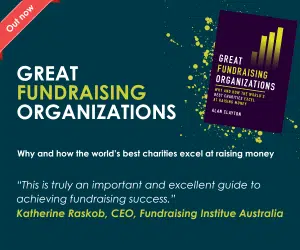Growing Your Trust Fundraising in 2019
If your charity relies on trust fundraising for part of its income, you will certainly be thinking how you can grow this source of funds in 2019.
A common request to consultants is for help in identifying new prospects for clients and sometimes this is the right solution for income growth. However, before spending time or budget researching new funders, it really is worth thinking through the other factors that drive your trust income, as these can often be as significant as widening the pool of prospects. So, for a quick checklist, here are some other things to consider.
Firstly, how strong is the case for support or project material that you are presenting to trusts and how do you know? When did you last review it from scratch? Have you asked anyone else to read it and comment? Sometimes, just taking a different approach in how you present your work can make all the difference. Try testing a different version of the case on a sample of funders.
Secondly, how good is your stewardship of your trust supporters? Do you thank them promptly (by phone and letter/email). How good is your reporting (even when not asked to do so)? Have you managed to build relationships with the funders that support you? This is important, as your warm donors are also your best prospects for the future. Do you maintain continuity of the relationship as far as possible?
Thirdly, people give to people, so have you carried out comprehensive contact mapping of all your best prospects? This involves asking your trustees, senior management and best supporters if they know any of the staff or trustees of the funders you are interested in. Charities often say “we don’t know anyone”. This is almost never true, but don’t ask people whom they know, give them a list of the funders and people you are interested in reaching and ask them to say which they know and how well. Then collate a list of the responses (and give people a deadline, so they actually respond to you). This is a really worthwhile action to take and can not only improve your chances of a grant but also increase the average gift size. It also gets you over the hurdle of “no unsolicited applications”.
Fourthly – and this may sound odd – are you applying for enough funding? We sometimes see charities that only seem to present small requests, when sometimes a bold application for a significant sum will get more attention. It’s certainly worth a try if you have a strong project!
Fifthly, remember that your past donors are your best prospects, especially if you have practised good stewardship and built the relationship. This is a key tenet of trust fundraising. So don’t just think of increasing the number of cold bids you make (which will have a lower success rate anyway). Prioritise those that have given before and see if you can increase their commitment, either by making a bigger grant or by multi-year funding.
Sixthly, how strong are your accounts and are they presented well for funders? If you have reserves that are too large or small or if you have been operating in deficit, you need to explain this. Funders will notice, so you have to address the issues head-on. If your accounts do not do so in a way that is helpful, speak to your finance team or accountant about fixing that for the next set and consider producing a one-page document that explains the issues in simple terms for the short-term. If your reserves really are large, consider designating some of the free reserves for specific purposes (such as a future building project). But remember this is a trustee decision, so you will need to secure buy-in at board level to do so.
Finally, have you got all the hygiene factors covered, such as proper budgets, compelling statistics of the needs you are addressing and clear outputs and outcomes? Today more funders especially expect to see evidence of impact and trust fundraisers will be fighting with one hand tied behind their back if they cannot provide this. While this is not always within the gift of the fundraising team, it is worth spending time internally explaining your need for this information, without which you will struggle to reach your potential with trusts. For some funders, it is also worth having an external evaluation of your project available for them to read on request, as this can provide objective evidence of your impact.
Only when you have sorted out all these issues should your next step be to spend time or money on cold prospect research. Next month we will look at some ideas for trust fundraising research.
Advertisement



